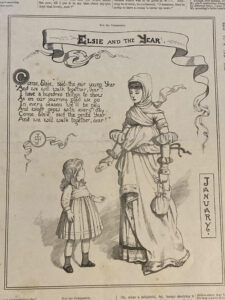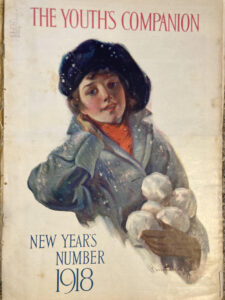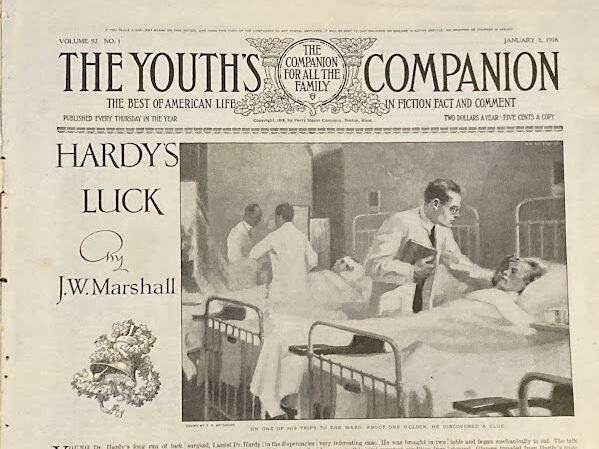Do you remember the childhood thrill of opening the mailbox to find the latest issue of your favorite magazine? Can you recall the anticipation you felt while quickly leafing through its glossy pages, impatiently scanning the stories, games, and craft ideas? Popular children’s magazines such as National Geographic Kids, Sports Illustrated Kids, American Girl Doll, or Highlights for Children often come to many of our minds when we recall our childhoods. These magazines captured many of our imaginations as we spent hours pouring over their pages. However new and exciting receiving our favorite magazine felt for us as children, the experience was not unique. Children’s magazines have been a common thread in the childhoods of American youth for over two hundred years.
A prime example of this is The Youth’s Companion magazine. It was an extremely popular magazine for children from 1827 until 1927 when it merged with The American Boy. Published by the Perry Mason Company in Boston, Massachusetts, it is a stellar example of an early American mass-produced magazine. Subscription was popular among middle and upper-class households. If a family chose not to pay for an annual subscription, the magazine sold individual issues for roughly one dollar. The magazine had a wide audience, including famous figures such as Laura Ingalls Wilder.
The magazine was known for being wholesome. It mainly published stories, poems, and story series that promoted moral and religious messages. These literary pieces were sometimes authored by notable writers such as Emily Dickinson and Jack London. While literature was the main focus of the publication, puzzles, songs, and crafts ideas were also included. These would often appear on separate pages specifically designated for girls and boys.
The magazine evolved as it moved through its century in publication. I am fortunate to have an issue from the 19th century and issues from the 20th century spanning from January 3, 1918, to December 26, 1918. Through studying these issues, it is clear how the magazine gradually morphed with the times.
Early editions of the magazine, such as the January 5, 1888 issue pictured here, were filled with black ink illustrations to accompany the stories. During this point in publishing, the content was almost exclusively targeted toward children, as the name suggests. Lengthy stories such as “Taming Cats”, a story about a lion tamer set in Paris, and “A Peddler’s Story”, a story about a Peddler who traveled to isolated homesteads in Maine, appear in this issue. The last two pages contain a littering of ads targeted towards adults for items such as shoes, bicycles, and land in California. Also on the back page, the magazine states that annual subscriptions cost $1.75. That is equivalent to roughly $43.00 in 2024.

As time progressed, the illustrations became larger and more colorful, as pictured on the cover of this 1918 New Year’s edition and the ‘Washington Number Patriotic Cover” of February 1918. The target audience changed in the 20th century from solely youth to “All the Family.” As a result, the content changed as well. The magazine claimed they provided, “The Best of American Life in Fiction Fact and Comment”. This included current events, such as news on World War I, or “The Great War”, stories for adults, advice columns, recipes, and a plethora of ads scattered throughout the magazine for items such as Quaker Oats. The magazine continued catering to its youth audience through “The Children’s Page” which provided their previous content. It sold for two dollars a year in 1918, the equivalent of roughly $45 in 2024.

The Youth’s Companion greatly influenced the culture during its publication and, as a result, our lives today. For example, The Pledge of Allegiance was written for and published anonymously in the magazine on September 8, 1892. It was written by either Francis Bellamy or James Upham for children to recite during the celebration of the 400th anniversary of Christoper Columbus’ discovery of America. Although the pledge was not nationally recognized until 1923, not made the official pledge until 1942, and last edited in 1954 by President Eisenhower, this iconic pledge, currently known by a vast majority of Americans to this day, began in The Youth’s Companion.

